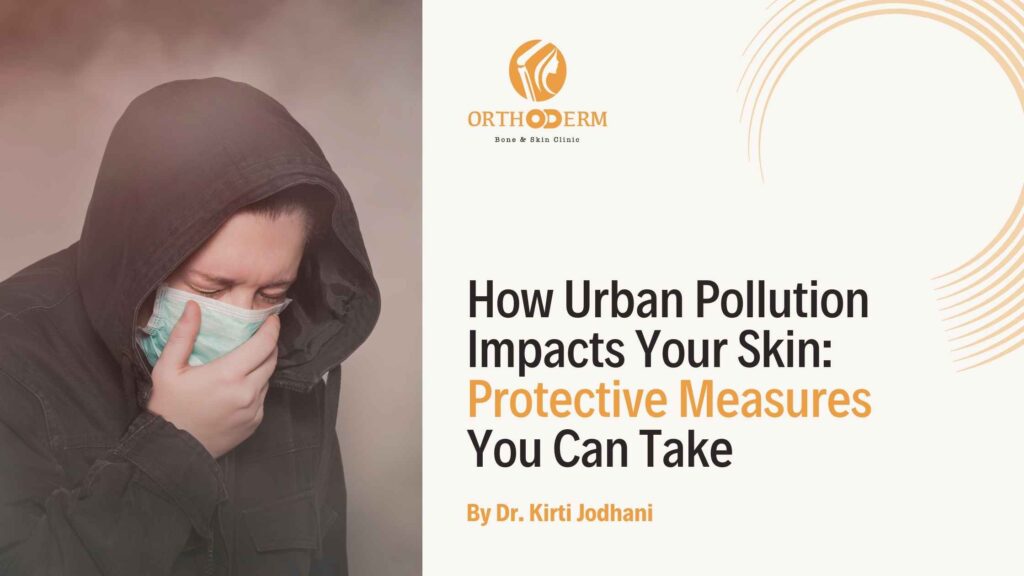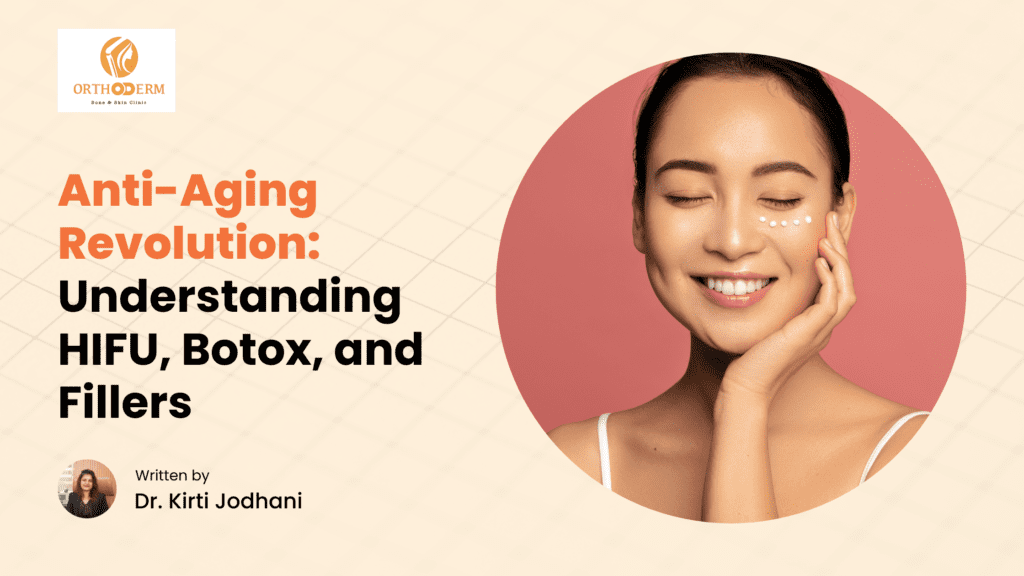As a dermatologist practicing in India, I’ve witnessed firsthand the growing impact of urban pollution on skin health. Our bustling cities, while vibrant and full of opportunity, expose us to a complex mix of pollutants that can wreak havoc on our complexions. From increased pigmentation to premature aging, the effects are undeniable.
In this article, I’ll break down how these pollutants affect your skin and, more importantly, share practical steps you can take to protect it, tailored specifically for the Indian environment.
Understanding the Unique Challenges of Urban Pollution in India
While urban pollution is a global concern, India faces unique challenges due to a combination of specific pollutants and environmental factors. As a dermatologist practicing here, I believe it’s crucial to understand these nuances to effectively protect our skin.
Specific Pollutants in Indian Cities:
The air quality in many Indian cities is often compromised by a complex mix of pollutants. While particulate matter (PM) is a major concern globally, we see particularly high levels of PM2.5 and PM10 in India. These microscopic particles, smaller than the width of a human hair, can penetrate deep into the skin and cause significant damage. These particles originate from various sources:
- Vehicular Emissions: With a high density of vehicles, especially two-wheelers and older diesel vehicles, emissions are a significant contributor to air pollution in Indian cities. These emissions release pollutants like nitrogen oxides (NOx), carbon monoxide (CO), and hydrocarbons.
- Industrial Emissions: Industrial activities, particularly in certain urban areas, release a variety of pollutants, including sulfur dioxide (SO2), heavy metals, and volatile organic compounds (VOCs).
- Dust and Construction: Construction activities and dry weather conditions contribute to high levels of dust and coarse particulate matter in the air, further exacerbating the effects of other pollutants.
- Seasonal Factors: Crop burning in agricultural regions during certain times of the year significantly impacts air quality in surrounding urban areas, releasing large amounts of smoke and particulate matter. This is a particularly serious issue in North India during the post-harvest season.
According to reports from the Central Pollution Control Board (CPCB) and the World Health Organization (WHO), many Indian cities consistently exceed recommended air quality guidelines. This constant exposure to high levels of pollution makes our skin particularly vulnerable.
Environmental Factors:
In addition to the specific types of pollutants, India’s diverse climate and environmental conditions play a crucial role in how these pollutants affect our skin:
- Heat and Humidity: Many parts of India experience high temperatures and humidity for a significant portion of the year. This combination can exacerbate the effects of pollution. Heat can increase sweat production, which mixes with pollutants and can clog pores, leading to breakouts. Humidity can make the skin more susceptible to absorbing pollutants.
- Sun Exposure: India receives high levels of solar radiation throughout the year. The combination of UV radiation and pollution creates a synergistic effect, increasing the risk of skin damage, including premature aging and hyperpigmentation. I often advise my patients that protecting against both sun and pollution is crucial.
- Dry Weather: In certain regions and seasons, dry weather conditions can lead to increased dust and particulate matter in the air, further irritating the skin and compromising its barrier function.
The Impact of Urban Pollution on Your Skin: Addressing Indian Concerns
Now that we’ve discussed the unique pollution challenges in India, let’s delve into how these pollutants affect your skin. In my practice, I see a range of skin issues that are directly linked to urban pollution, and it’s important to address these concerns specifically within the Indian context.
Common Skin Problems:
Several skin problems are frequently exacerbated by urban pollution, and I often see these in my Indian patients:
- Hyperpigmentation and Dark Spots: This is a very common concern in India. Pollution can trigger the production of melanin, the pigment responsible for skin color, leading to uneven skin tone, dark spots, and melasma. The combination of pollution and strong sun exposure in India makes this a particularly prevalent issue. I often recommend targeted treatments and sun protection to manage this.
- Dullness and Uneven Skin Tone: Many of my patients express a desire for a “glowing” and even complexion. Pollution can contribute to dullness by interfering with skin cell turnover and causing oxidative stress. The buildup of pollutants on the skin surface can also create a lackluster appearance.
- Acne and Breakouts: Pollution can clog pores, especially when combined with sweat and oil production, which are common in India’s hot and humid climate. The pollutants mix with sebum (skin oil) and create an ideal environment for acne-causing bacteria to thrive.
- Sensitivity and Irritation: Many individuals in India report having sensitive skin. Pollution can further compromise the skin barrier, making it more susceptible to irritation, redness, and inflammation. This can manifest as dryness, itching, or even exacerbate conditions like eczema and rosacea.
Lesser-Known Impacts:
Beyond these common concerns, research is revealing further connections between pollution and skin health, some of which are particularly relevant to the Indian context:
- Impact on Skin Microbiome: The skin microbiome, the community of microorganisms living on our skin, plays a vital role in maintaining skin health. Emerging research suggests that pollution can disrupt this delicate balance, leading to inflammation and other skin problems. This disruption can also affect how well our skin responds to certain skincare products.
- Premature Aging: While sun exposure is a major factor in premature aging, pollution also plays a significant role. Pollutants generate free radicals, which damage collagen and elastin, the proteins responsible for skin’s firmness and elasticity. This can lead to wrinkles, fine lines, and sagging skin, concerns that many of my patients in India have.
- Exacerbation of Existing Conditions: Pollution can worsen pre-existing skin conditions like eczema, psoriasis, and melasma, which are prevalent in India. The pollutants can trigger inflammation and irritation, making these conditions more difficult to manage. I always advise patients with these conditions to take extra precautions to protect their skin from pollution.
- Increased Risk of Skin Allergies: Studies suggest a link between air pollution and an increased incidence of allergic skin reactions. This is becoming a growing concern in urban areas of India where air quality is poor.
Protective Measures You Can Take: Tailored for the Indian Context
While we can’t completely escape urban pollution, we can take proactive steps to minimize its impact on our skin. As a dermatologist practicing in India, I recommend the following protective measures, keeping in mind our specific climate and environmental challenges:
Cleansing
Thorough cleansing is crucial for removing pollutants that accumulate on the skin throughout the day. I advise my patients to:
- Double Cleanse: Especially in the evening, I recommend double cleansing. First, use an oil-based cleanser to dissolve oil-based pollutants, makeup, and sunscreen. Follow this with a gentle, water-based cleanser to remove any remaining impurities. This is particularly effective for removing the heavy particulate matter common in Indian cities.
- Choose the Right Cleanser: Opt for a cleanser that is appropriate for your skin type. For those with oily or acne-prone skin, a foaming cleanser might be suitable. For dry or sensitive skin, a gentle, hydrating cleanser is preferable. Avoid harsh soaps that can strip the skin’s natural oils and further compromise the skin barrier.
Antioxidant-Rich Skincare
Antioxidants are essential for neutralizing free radicals generated by pollution. I recommend incorporating the following into your skincare routine:
- Vitamin C: This potent antioxidant protects against oxidative stress and brightens the skin. Look for serums or creams containing L-ascorbic acid or other stable forms of vitamin C.
- Green Tea Extract: This natural ingredient is rich in polyphenols, which have powerful antioxidant and anti-inflammatory properties.
- Niacinamide (Vitamin B3): This ingredient strengthens the skin barrier, reduces inflammation, and improves skin tone.
- Local Ingredients: Ingredients like turmeric (curcumin) and aloe vera, commonly used in India, also possess antioxidant and anti-inflammatory benefits.
Moisturizing
A good moisturizer strengthens the skin barrier and helps protect against pollutants. In India’s often humid climate, I advise:
- Lightweight Formulas: Choose lightweight, non-comedogenic (non-pore-clogging) moisturizers that won’t feel heavy or greasy on the skin. Gel-based or lotion formulas are often suitable.
- Humectants: Look for moisturizers containing humectants like hyaluronic acid and glycerin, which draw moisture to the skin.
Sun Protection
Sunscreen is non-negotiable, especially in India’s sunny climate. I recommend:
- Broad-Spectrum Protection: Choose a broad-spectrum sunscreen with an SPF of 30 or higher to protect against both UVA and UVB rays.
- PA++++ Rating: Look for a PA++++ rating, which indicates protection against UVA rays, which contribute to premature aging and hyperpigmentation.
- Water and Sweat Resistance: In India’s humid climate, opt for water-resistant and sweat-proof sunscreens. Reapply every two hours, especially after sweating or swimming.
Diet and Lifestyle
A healthy lifestyle supports overall skin health and can help mitigate the effects of pollution:
- Antioxidant-Rich Diet: Consume a diet rich in fruits, vegetables, and spices, which are packed with antioxidants. Incorporate local Indian foods like berries, citrus fruits, leafy greens, and turmeric.
- Hydration: Drink plenty of water to keep your skin hydrated and flush out toxins.
- Regular Exercise: Exercise improves circulation and helps deliver nutrients to the skin.
Home Remedies and Natural Ingredients
Many traditional Indian ingredients offer skin benefits:
- Aloe Vera: Soothes irritated skin and has anti-inflammatory properties.
- Neem: Has antibacterial and anti-inflammatory properties and can be helpful for acne-prone skin.
- Sandalwood: Has cooling and soothing properties.
While these can be beneficial, it’s important to use them with caution and consult with a dermatologist if you have any concerns.
Professional Treatments
Professional treatments can further enhance skin health and combat the effects of pollution:
- Facials: Regular facials can help remove impurities and revitalize the skin.
- Chemical Peels: Can improve skin texture, reduce hyperpigmentation, and unclog pores.
- Laser Therapy: Can address specific concerns like hyperpigmentation and fine lines.
Conclusion
Protecting our skin from the effects of urban pollution is an ongoing effort, especially in the context of India’s unique environmental challenges. As I’ve outlined, a combination of diligent skincare, a healthy lifestyle, and, when necessary, professional treatments can significantly mitigate the damage. I encourage you to incorporate these strategies into your daily routine.
If you have concerns about the impact of urban pollution on your skin or would like a personalized skincare plan tailored to your specific needs, I encourage you to schedule a consultation with me. You can contact my clinic at +91 70020 33804 to book an appointment.
Frequently Asked Questions (FAQs)
I often encounter similar questions from my patients regarding the impact of urban pollution on their skin. Here are some of the most frequently asked questions and my responses:
Q: How does pollution specifically affect Indian skin tones, which tend to have more melanin?
A: Skin with higher melanin content is generally more protected from sun damage, but it’s not immune to the effects of pollution. In fact, pollution can exacerbate hyperpigmentation, a common concern among individuals with Indian skin tones. Pollutants trigger melanocytes (the cells that produce melanin) to produce even more pigment, leading to dark spots, uneven skin tone, and melasma. Therefore, consistent sun protection and antioxidant use are crucial.
Q: Are there specific ingredients I should look for in skincare products to protect against pollution in India’s climate?
A: Yes, certain ingredients are particularly beneficial. I recommend looking for products containing:
- Vitamin C: A potent antioxidant that protects against free radical damage.
- Niacinamide: Strengthens the skin barrier and reduces inflammation.
- Green tea extract: Offers antioxidant and anti-inflammatory benefits.
- Hyaluronic acid: Hydrates the skin and strengthens the skin barrier.
- Ceramides: Help repair and maintain the skin barrier.
In addition to these, ingredients like turmeric (curcumin) and aloe vera, commonly used in Indian remedies, can also offer soothing and antioxidant benefits.
Q: Is it enough to just wash my face to remove pollution, or do I need a more elaborate routine?
A: While washing your face is essential, it may not be sufficient to remove all pollutants, especially the fine particulate matter prevalent in Indian cities. I recommend double cleansing, especially in the evening. This involves using an oil-based cleanser to dissolve oil-based pollutants and makeup, followed by a water-based cleanser to remove any remaining impurities.
Q: I have oily skin. Won’t using a moisturizer make my skin even oilier in India’s humid climate?
A: Not necessarily. Choosing the right moisturizer is key. I recommend lightweight, non-comedogenic (non-pore-clogging) moisturizers, such as gel-based or lotion formulas. These will hydrate your skin without making it feel greasy. Look for oil-free or mattifying formulas if you have very oily skin. Hydration is important even for oily skin as it helps maintain a healthy skin barrier.
Q: How can I protect my skin from pollution while riding a two-wheeler, which is a common mode of transport in India?
A: This is a very important question. I recommend:
- Wearing a mask: A good quality pollution mask can filter out a significant amount of particulate matter.
- Applying sunscreen: Even while wearing a mask, some areas of your face may be exposed to the sun. Apply a broad-spectrum sunscreen with a high SPF and PA++++ rating.
- Cleansing thoroughly after your commute: As soon as you reach your destination, cleanse your face to remove any accumulated pollutants.
Q: Are home remedies effective against pollution damage?
A: Some home remedies, such as those using aloe vera, neem, and turmeric, can offer soothing and antioxidant benefits. However, they may not be sufficient on their own to address the full impact of urban pollution. I recommend incorporating them as part of a comprehensive skincare routine that includes cleansing, moisturizing, and sun protection. If you have any serious skin conditions, consult a dermatologist before relying solely on home remedies.
Q: How often should I consult a dermatologist if I live in a highly polluted city?
A: I recommend an annual check-up as a baseline. However, if you are experiencing persistent skin issues or have any concerns, you should consult a dermatologist sooner. Early intervention can prevent more serious problems from developing



